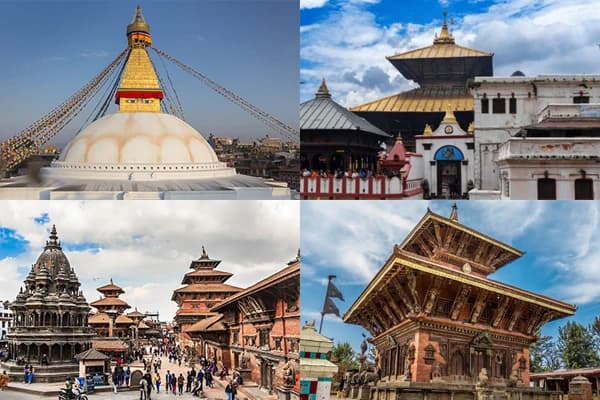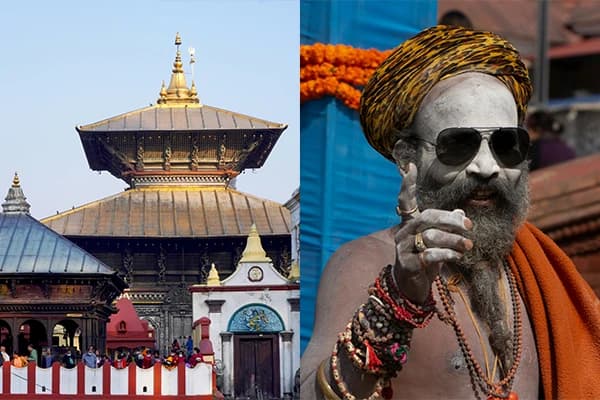RARA LAKE
Rara Lake is the largest and deepest lake in Nepal. Rara Lake is also known as Mahendra Lake. It is located in the remote districts of Mugu and Jumla of Karnali Province. In 2007, it was declared a Ramsar site with a total area of 1583 ha with surrounding wetlands. It lies at an altitude of 2,990 meters above sea level.
In 1976, Rara Lake became a part of Rara national park. This region is inhabited by the Thakur people, and their occupation is agriculture. Locals believed that the god Thakur opened the passage of the lake by shooting an arrow, which resulted in a reduction of flood. They worship Thakur Baba’s Temple, which lies in the southeast corner of the lake.
This pristine lake is surrounded by lush green forests and towering mountains while showing the image of the surroundings on its surface. This creates a serene and enchanting atmosphere that surely wins the hearts of nature lovers and travelers. It is located 864 km away from the capital, Kathmandu. You can travel via flight (Kathmandu to Nepalgunj and Nepalgunj to Mugu and walk around 3-4 hours to Rara Lake) or overall via roadways.
The peak seasons to visit Rara Lake are autumn and spring. The main attraction of Rara Lake is snow trout. Due to its high altitude and changing weather phenomenon, it changes its hue. It offers diverse flora and fauna along with a perfect view of Mt. Sistine and Kanjirova. You can see fauna like mountainous black bears, musk deer, and thar, and native and migratory birds, like mallards, pheasants, and common teal.
Rara Lake offers coniferous forests like Himalayan cypress, West Himalayan spruce, black juniper, rhododendron, and oak. You can enjoy this fresh atmosphere with your friends and family either via trekking or using roadways.
GOKYO LAKE
Gokyo Lake is one of the world’s highest freshwater lake systems, located at an altitude of 4,700 meters to 5,000 meters from sea level. It is an oligotrophic lake that lies in the Khumjung Village, Solukhumbu District. The name Gokyo comes from Gokyo Ri Peak. The trek to gokyo lake takes you to the Everest Base Camp which is the best alternate route without the crowds of the everest base camp trek.
Gokyo Lake is composed of six main lakes: Gokyo Cho (Dudh Pokhari, 3rd and the main lake), Langponga Tsho (1st Gokyo Lake), Taujung Tsho (2nd Gokyo Lake), Thonak Tsho (4th Gokyo Lake), and Ngozumpa Tsho (5th Gokyo Lake). Thonak Cho is one of the largest lakes among six lakes. You will reach Gokyo Lake within 7 days, taking a flight to Lukla from Kathmandu or traveling via roadways to Jiri, then heading to namche bazaar to Gokyo Lake.

Since Gokyo Lake lies in the everest region, you can see magnificent views of mountains like Mount Everest, Lhotse, Cho Oyu, and Makalu. It also has a religious aspect, and Hindus and Buddhists consider it a holy lake. Hindu people believe that this lake is the habitat of “Nag Devta,” also known as the Snake God.
Every year many locals pay their visit to this sacred lake on the occasion of the Janai Purnima and Gangadashara festivals. They bathe and worship Lord Shiva and Lord Vishnu at the lake’s southern end. Locals of these areas believe that they shouldn't kill or injure any native animal, which helps in the conservation of wildlife. It is itself an adventure, the Gokyo Lake Trek offering a unique chance to explore the lifestyle of the Sherpa along with the views of the highest mountain peaks.
TILICHO LAKE
Tilicho Lake is one of the highest lakes in Nepal. It lies in the Manang District, at an altitude of 4,919 meters from sea level. It is in the annapurna region which makes it one of the popular side hike destinations in the annapurna circuit with tilicho lake trek. The beautiful waterfalls, lush greenery, and breathtaking mountains showcasing Thorong La pass and astounding Jomsom make it a perfect destination for hiking.
You can enjoy majestic mountains like Mount Himlung, Mount Manaslu, and many other peaks on the way to Tilicho Lake. The Hindu devotee believed that Tilicho Lake carries the significance of the ancient Kak Bhusundi Lake mentioned in the epic Ramayana.

When the shadows of surrounding mountains fall in the icy clear crystal water, the formation of blue hues makes you awestruck for a while. The lake's high elevation makes it unsuitable for any aquatic organism's habitat.
You should hike along the Annapurna Circuit trail from Jagat and cross places like Chame, Pisan, Manang, and Siri Kharka, then you will reach Tilicho. You have to pass through Mesokanto-La, passing the Annapurna Circuit trekking trail. In 2000, a group of Russian divers conducted a dive into Tilicho Lake, marking it as one of the highest-altitude scuba diving spots.
GOSAIKUNDA LAKE
Gosaikunda is an alpine freshwater oligotrophic lake located at an altitude of 4,380 meters in the Rasuwa district of Nepal. It comprises about 1030 ha (2500 acres) of total land surface, including all the associated lakes inside Langtang National Park. It was designated as a Ramsar site on 29 September 2007.
There is a belief that Lord Shiva created Gosaikunda Lake to obtain water by pushing his Trishul (Trident) on a hill to treat his poisoned throat. The lake remains frozen for six months from October to June, and it mixes with the Trishuli River after melting. The Lauribina La Pass is found in the outer part of the lake at an altitude of 4,610 meters. Out of 108 Kundas, Saraswati Kunda, Bhairab Kunda, and Surya Kunda are some of the notable Kundas.

Hindu and Buddhist pilgrims come from all over the country and India to take a bath once a year on the occasion of janai purnima and Gangadashara. Gosaikunda Lake is the origin of Samundra Manthan, which is found in theological stories like the Bhagavata Purana, Vishnu Purana, Ramayana, and Mahabharata.
Gosaikunda Lake is perfect to add to your itinerary while booking the langtang valley trek. The route to Gosaikunda starts from Kathmandu to Dhunche is around 102 km far from the starting point. One can also book helicopter tours from us to reach Gosaikunda within 17 minutes.
BISHAZARI LAKE
Bishazari Lake, also spelled as Beeshazar Tal, is an oxbow lake encompassed by the Mahabharat Range (lower Himalayan range) to the north and the Siwalik Range to the south. It lies at an altitude of 286 meters from sea level and is situated in the buffer zone of the Chitwan National Park.
Located in the Inner Terai of Central Nepal, it covers an area of 3,200 ha (7,900 acres). It was declared as a Ramsar site in August 2003. The word "Bishajari" means 20,000 lakes. There are 20,000 small lakes and big lakes, and when you watch this lake from the air, the lake appears to be in the shape of 20,000, which ultimately gives the name to this lake.
It is a habitat of hundreds of mammals, birds, and reptiles, including rare animals like the Bengal tiger, sloth bear, smooth-coated otter, one-horned rhino, wild boar, Indian porcupine, Indian peafowl, white-rumped vulture, Pallas's fish eagle, lesser adjutant, ferruginous duck, and other various creatures. You can take a bus from Kathmandu to Bharatpur, which will only be 6 to 7 hours in duration. Then, you can hire a private taxi or rickshaw to reach Bishajari Lake.
PHEWA TAL/LAKE
Phewa Lake is the second-largest lake in Nepal. Located in the south of the Pokhara Valley, it was formerly known as Baidam Tal. pokhara is the capital of tourism in Nepal. It expands in an area of 5.7 square kilometers and is situated at an altitude of 742 meters from sea level.
Phewa Lake is famous for its reflection of mount machhapuchhre on its surface. You can also see other peaks of the Dhaulagiri and annapurna mountain ranges from here. In the middle of Phewa Lake, you can see a holy temple known as Tal Barahi Temple.

This two-story temple in the middle of the lake is dedicated to Lord Vishnu. You will need a boat to visit Tal Barahi Temple. Phewa Lake is used to generate electricity along with tourist attractions. One can enjoy water sports like rafting, kayaking, and canoeing on a normal day. There are plenty of street food items, bars, cafes, restaurants, and Funland, where you can sit and enjoy the peace of Phewa Lake.
PANCH POKHARI
Panch Pokhari lies at an altitude of 4100 m above sea level and is placed in the Sindhupalchowk District of Nepal. As the word "Panch" indicates five and "Pokhari" means ponds/lakes, this lake is a group of five lakes. It is a religiously affluent sacred destination and is the ninth-highest-altitude wetland in the world.
The Hindu and Buddhist pilgrims visit this lake from July to August (Bhadra-Ekadashi to Janai Purnima). They believe they should take a dip in this sacred pond on the full moon day. This lake is at the base of Jugal Himal, which includes Dorje Lhakpa (6966 m), Madiya (6257 m), and Phurbi Chhyachhu (6637 m). If you are in Kathmandu and want to trek, you can go to Panch Pokhari trekking.

Panch Pokhari trekking is a remote and easily accessible trekking route that takes you through the rural village of Sindhupalchowk. You can immerse yourself and learn about the culture and traditions of the Tamang and Sherpa communities. Panchpokhari is an important attribute of Langtang National Park. It incorporates several high-altitude wetlands, but it is yet to be declared a Ramsar site.
While hiking you will rarely see crowds; if you want to hike alone with a group of friends, then it is the perfect option for you. You can easily go there by taking a bus to Bhotang. It takes 6 to 7 hours to reach Bhotang, and after that, you have to walk for 2 hours via Kami Kharka, Pauwa Bas, and Hile Bhanjyang to reach Panch Pokhari. When you visit Panch Pokhari in September, you will get a view of a clear blue sky and crystal-clear water.
GHODAGHODI TAL
Ghodaghodi Tal is located in the Far-Western Development region of Nepal, Kailali. It has a large 13-km-long oxbow-shaped lake associated with marshes and meadows. It covers an area of 2,563 hector on the lower slope of the Siwalik Hills. It lies at an elevation of 205 meters and has an average depth of 4 meters.
In August 2003, Ghodaghodi Lake was declared a Ramsar site with 14 other lakes and ponds by unesco world heritage site. In March 2022, it was declared as a bird sanctuary. The lake is surrounded by tropical deciduous forests and some streams that border the hillocks. There are 388 vascular plants, 5 pteridophytes, 253 dicots, and 130 monocots. It is the habitat of wildlife of the Terai lowland and the Siwalik Hills.

They protect critically endangered and vulnerable species like the Bengal tiger, smooth-coated otter, Eurasian otter, swamp deer, lesser adjutant stork, red-crowned roofed turtle, and three-striped roofed turtle. According to a February 2021 survey, there are 26 mugger crocodiles recorded in 18 lakes.
According to Hindu belief, Lord Shiva and Parvati used to circle this lake after being cursed by a hermit in the form of a male horse and a female horse. Tharu people celebrate “Agan Panchamu” in December to dedicate a shrine for the Ghodaghodi deity. You can travel via flight (1 hour 15 minutes) or bus (12 hours). This is a unique opportunity to blend yourself into the culture and tradition of the Tharu people by enjoying their local delicacies.
SHEY-PHOSUNDO LAKE
Shey-Phoksundo Lake is located at an elevation of 3,611.5 meters from sea level. It is an alpine freshwater oligotrophic lake situated in the Dolpa district of Nepal. It covers an area of 494 hectar with a maximum depth of 145 meters. It lies within the territory of Shey Phoksundo National Park. Phoksundo Lake was designated as a Ramsar Site in September 2007.
While visiting Shey-Phoksundo Lake, you can also consider doing the upper dolpo trek and lower dolpo trek. The southern belt of the holy land has 20 stupas and one gompa on the eastern side, where the pilgrims perform their prayer and worship it according to their belief.

In the Upper Dolpo area, one can see the traditional Tibetan culture, while Buddhism and Bon are in Lower Dolpo and Ringmo Village. You can reach this Y-shaped lake in the hills of the Kanjirowa Mountains within 50 minutes via flight; you will reach there in 12 to 15 hours from Kathmandu to Nepalgunj.
Nature will surely amaze you whether you travel via bus or airways. One of the popular monasteries built on the coast of the lake is Thang Choling Monastery, which was built in the 15th century.
BIRENDRA TAL
Birendra Lake is located in Manaslu Glacier in Gorkha. The lake is named after the late King Birendra Shah and lies at an altitude of 4500 meters from sea level. It is in the periphery of Punhyen Glacier and Gompa of Samagaun. The freshwater lake is getting its recognition due to an increase in manaslu circuit trekking.

Many hikers and visitors do a side trek to Birendra Tal after visiting the castle, the Upper Castle, where King Prithivi Narayan Shah spent his childhood. The snow-capped peaks, lush green forests, and waterfall add to the beauty of the pristine lake.
To sum up...
These are the top 10 lakes in Nepal that you should visit in 2026 seasons. Nepal also offers many other beautiful lakes like Mai Pokhari, Rupa Lake, Taudaha, Gangapurna, Imja Tsho Lake, and so on. Located in the lap of lush green vegetation and snow-capped mountains, these lakes offer you the chance to witness and immerse yourself in the culture, tradition, religion, history, and biodiversity of different areas of Nepal.
Mystic Adventure Holiday also customizes trips to these ten lakes and other popular lakes of Nepal, so make sure to contact us through the WhatsApp button on the lower left-hand corner of the screen.















